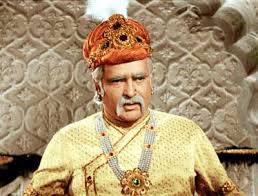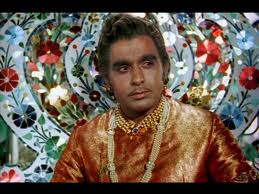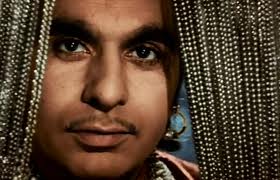Mughal-e-Azam
This is a collection of newspaper articles archived for the excellence of their content. |
Contents |
Facts about Mughal-e-Azam
The Times of India Crest EditionJuly 31, 2010
The movie was premiered in Mumbai's Maratha Mandir and released simultaneously in 150 theatres across the country.
Before every shot, Prithviraj Kapoor (who played Jalaluddin Mohammad Akbar) would look into a full-length mirror. When director K Asif asked the reason for the odd behaviour, Kapoor said he did it to 'get under the skin of the character'.
K Asif took nine years to make Mughal-e-Azam. In 1952, Jhansi Ki Rani became India's first movie to be shot in technicolour. Asif wanted to remake his film entirely in colour too, but it is said the distributors lost patience and settled for shooting two songs and the climax of the film in technicolour. Some 85 per cent of the movie was filmed in black-and-white. In November 2004, the Indian Academy of Arts and Animation restored, colourised and re-released the film in 100 per cent colour. This is the first full feature-length movie to be coloured and re-released in theatres in the history of cinema. Some English films have been coloured but only released in the home video format.
The colour version of the film was the first Indian movie to be released in Pakistan after Indian movies were banned there after the 1965 war.
A chorus of 100 singers accompanied Mohammed Rafi in the song Ae Mohabbat Zindabad.
Pyar Kiya Toh Darna Kya was shot in a Sheesh Mahal [set constructed] at a cost of Rs 10 lakh at a time when entire movies were made on that budget. Most thought financier Shapoorji Pallonji would go bankrupt filming this one song itself. The song was written and re-written more than a hundred times by lyricist Shakeel Badayuni before music director Naushad approved of it. To provide the reverbration effect in the song, Lata Mangeshkar recorded it in a bathroom.
The director had initially thought he would release Mughal-e-Azamin three languages - Hindi, Tamil and English. The Tamil version did so badly, Asif dropped the idea of dubbing it in English. Madhubala's heart condition did not allow her to sign any films after this one.
To ensure a life-like performance, the chains Madhubala wore in the movie were real. The actress nursed the bruises caused by the chains for days. 2, 000 camels, 4, 000 horses and 8,000 troops were used in the battle sequence, many of them were sought from the Indian Army through special permission from the Defence Ministry. The soldiers were from the Jaipur regiment.
Mughal-e-Azam: royally glossing over history's true colours
K Asif's tale of a dastardly prince who turns against his father buries widely accepted truths under layers of embellishments
Historically inaccurate … Mughal-e-Azam plays free with Indian legends
1. Mughal-E-Azam
2. Production year: 1960
3. Countries: India
4. Cert (UK): PG 5. Runtime: 173 mins
6. Directors: K Asif
7. Cast: Dilip Kumar, Madhubala, Prithviraj Kapoor
Akbar the Great was emperor of India from 1556-1605, his reign covering approximately the same period as Elizabeth I's in England (1558-1603).
The plot of the film
Family
Longing for a son, the emperor Akbar (Prithviraj Kapoor) treks across the desert to visit a holy man. Soon afterwards, the infant Prince Salim (the future Emperor Jahangir) is born. Looks like somebody didn't pray hard enough. He's a horror. Even as a child, his hobbies are getting drunk and slapping the servants. "Divest him of his mother's tender love and clad him in armour!" cries his father. The little prince is taken off to war to be toughened up. In real life, Salim was a heavy consumer of alcohol and opium, though these habits did not start until he was 18. It is also true that he was brutal: he castrated one servant, beat another to death, and had a writer who wrote nasty things about him flayed alive while he watched. This is why many historians prefer to write about tyrants who are already dead.
Romance
Finally, the adult Salim (now played by Dilip Kumar) is allowed back to the emperor's presence. He's a lot nicer than the real-life Salim, which is fortunate because he is supposed to be the romantic hero, and if he were to keep getting boozed up and beating people to death it might spoil the mood. The court sculptor has been working on a statue. It isn't finished, so a dancing-girl (Madhubala) paints herself the colour of marble and poses in its place. Salim is struck by her beauty, and doesn't even seem too disappointed when she turns out to be alive. Akbar honours her with a new name: Anarkali, meaning pomegranate blossom. He isn't so keen when Salim gets ideas about marrying her.
People
The story of Anarkali is often regarded as legend, though there are snippets of historical evidence for it. She may have been called Nadira Begum or Sharif-un-Nisa, and was possibly a painter of miniatures and/or a courtesan. The English merchant William Finch, who travelled to the Mughal court in the early 1600s, suggested she was one of Akbar's wives and the mother of Salim's half-brother Prince Daniyal. Mughal-e-Azam explores the oedipal element of this story only in terms of the antagonism between Salim and his parents over who gets to make decisions about Salim's life. This is a perennial Bollywood theme, but here it has a basis in fact. The real Salim led a rebellion against his father, tried to replace him as emperor, and had his friend Abu al-Fazl murdered in 1602.
Death
The film ascribes Salim's rebellions against his father to his desire to marry Anarkali, which is definitely not historically accurate. Akbar's revenge is to have Anarkali bricked up in a wall. The site on which it is supposed to have happened in Lahore has a tomb on it built during Jahangir's reign. Since Mughal times, the Anarkali tomb has been used as a residence, a parish church and a records office.
Film-making
When Technicolor became available in India, director K Asif wanted to reshoot the whole of Mughal-e-Azam (which in any case was in production for 12 years, on and off). By that point, he had already shot three-quarters of it in black and white, and spent many times the usual budget of a Hindi film. His financiers said no. Asif settled for adding some scenes in colour: notably, the gorgeous sheesh mahal (palace of mirrors) sequence. In 2004, a new version of Mughal-e-Azam was released with the rest of the film retrospectively "colourised" and the entire print restored. The restoration was an improvement. As with many other colourisation projects, though, the fake colours tend to look flat and brash, detracting from cinematographer RD Mathur's elegantly composed shots.
Verdict
Mughal-e-Azam is a landmark of cinema, even if its version of history is only slightly more realistic than its new colours.





